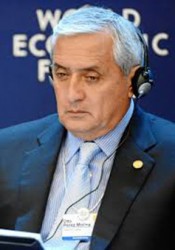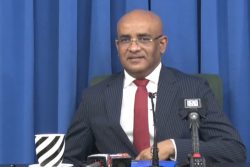GUATEMALA CITY, (Reuters) – Three of the poorest, most violent Central American countries want $20 billion over the coming years to lift their economies with new roads and better education to curb illegal migration into the United States, according to a plan seen by Reuters.

The document was given to U.S. President Barack Obama in April at a Panama City summit by the governments of El Salvador, Honduras and Guatemala after a flood of child migrants from the three countries overwhelmed the southern U.S. border last year.
Foreign ministers from those countries will go to Washington on June 16 to discuss the proposal with U.S. officials, according to people familiar with the matter.
The spending plan aims to revitalize one of the poorest and most dangerous regions in the world, and it seeks to raise growth by up to 3.5 percent and create 600,000 jobs.
“This alliance would position us as a new emerging region by 2020, becoming one of the main tourist destinations, a magnet for foreign investment and a regional logistical center for the hemisphere,” the document says.
The $20 billion would come from public, private and development agency sources, including the region’s allies like the United States, the document says.
Guatemalan President Otto Perez said late last year the three nations were ready to stump up $5 billion to match a sum the United States had said may be needed to help stem the migrant flow.
The White House has asked for an annual $1 billion in new aid for Central America in its 2016 fiscal budget, well below the sum the region’s governments believe is needed. The U.S. money still needs to be approved by lawmakers.
However a senior U.S. official said this week she feared the U.S. Congress would approve only part of the funding requested.
Further complicating the matter, since the plan was presented, the governments of Guatemala and Honduras have been hit by corruption scandals that have led to major street protests calling for Guatemala’s Perez and his Honduran counterpart Juan Hernandez to step down.
Under the plan, the three Central American countries would integrate their regional electricity networks to lower power costs by up to 35 percent by 2020. Up to $2 billion would be spent on diversifying the region’s energy supply.
By 2020, the plan foresees investment of $5.1 billion in roads and transport infrastructure, $2.6 billion in education and job creation for the young and $2 billion in airport and border infrastructure.
Additionally, more than $1 billion would be spent on policing, prisons and crime prevention, with the aim of lowering the murder rate in each of the countries by 10 percent a year between 2016 and 2020.
According to the United Nations, Honduras had the highest murder rate in the world with 90.4 slayings per 100,000 people in 2012. El Salvador was in fourth place, but has seen murders rise this year following the collapse of a gangland truce.









